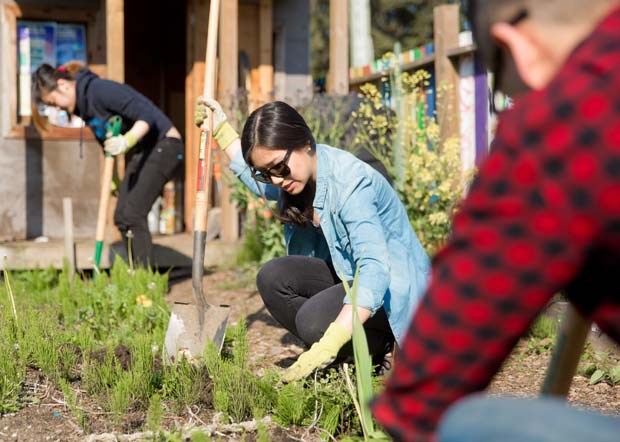I first noticed it late last year.
I was kneeling on a foam cushion, intent on cleaning up the vegetable beds for winter.
As I sank my hands into the soil I felt myself sink into a timeless dimension.
Or, to put it another way — poof, the thousands of years separating me from the time when humans learned that soil supported plants crucial to our existence were no more.
I kept thinking, I could be a Roman slave or a Medieval peasant, I’m going through the same motions they went through (minus the foam cushion).
And now, in spring, I’ve once again suspended time, sinking my hands into the soil, sowing a seed here, evicting a weed there.
Repeating, or continuing, an activity that people have done for hundreds of generations calms me.
The etymology of calm makes the word singularly appropriate in this context.
Calm, which entered the English language in the 14th century, is based on the late Latin “cauma,” meaning the heat of the day or sun.
It, in turn, is derived from the Greek “kauma.”
When the sun shines at noon in a climate like that of Italy or Greece, people take refuge in a cooler, darker place and remain still or move slowly.
Likewise, any movement of which the plant is capable will be slow, which is one of the reasons gardening is an antidote to the haste that rules our daily lives.
We’re always rushing somewhere, rushing to get something finished, so we can leave it and rush on to something else.
Rush, based on the Old French “ruser,” originally signified to use trickery or to drive back (perhaps from the Latin “rursus,” backwards), and that’s often the effect rushing has — it tricks us into thinking we’re efficient, but the result is frequently the opposite.
A plant (listening to Mother Nature) knows better — no matter how hasty and impatient the gardener is, the plant refuses to be rushed.
When I read the words of an ancient Roman writer on agriculture, I was struck by his powers of observation, by how keen and patient he must have been to witness what he did.
He didn’t have a library full of reference books on the subject, nor specialists with university degrees he could consult.
The ancient Roman learned about plants by observing them and the conditions of the land on which they grew.
And he did this year after year, because with every season the land had advanced just a little step closer to the goal of natural fertility.
At this time of the year, a quantity of garden books parade in book stores and libraries, all tempting us with quick fixes, guaranteed results, instant pleasure.
Many contain helpful tips for those of us (like me) who feel they’re often gardening by the seat of their pants.
And yet, none that I’ve read mention a lesson I’ve learned the hard way: to treat the garden not as a piece of land to be conquered, but as a piece of nature whose message, delivered slowly, is worth heeding.
Sabine Eiche is a writer and art historian. See her blog here.



